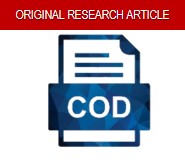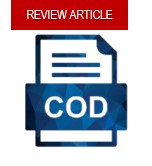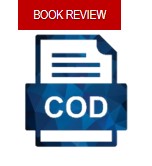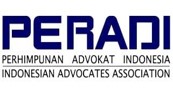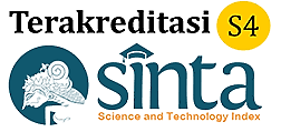Skincare Product Safety Regulations in Indonesia and Asian Countries within the Framework of International Legal Standards
DOI:
https://doi.org/10.46924/jihk.v7i2.346Keywords:
National Regulation, Skincare, International Law, HarmonizationAbstract
This study is driven by the rapid expansion of the global cosmetics trade, which necessitates the alignment of national regulations with international legal standards, particularly in relation to skincare product safety. The objective of this research is to examine Indonesia’s administrative regulations on skincare safety, compare them with those of selected East Asian countries, and evaluate their conformity with international legal frameworks. Employing a qualitative approach, this study utilizes descriptive-comparative analysis of national legal instruments, international standards, and relevant academic literature. The findings reveal that Indonesia has adopted the ASEAN Cosmetic Directive (ACD) harmonization framework; however, its implementation continues to encounter challenges in areas such as regulatory oversight, bureaucratic processes, and technical capacity. In comparison with Japan, South Korea, and China, Indonesia’s regulatory framework remains less integrated. The study concludes that strengthening institutional capacity and enhancing regulatory harmonization are essential to achieving greater alignment with the WTO’s Technical Barriers to Trade (TBT) principles and other international standards.
Downloads
References
Journals
Annisa, Ade Rizki, Zulfikar Jayakusuma, and Ledy Diana. “Analisis Yuridis Implikasi Agreement On The Asean Harmonized Cosmetic Regulatory Scheme Terhadap Kebijakan Impor Kosmetik Di Indonesia: Kasus Kosmetik Merek Dnars.” Jurnal Ilmiah Wahana Pendidikan 9, no. 21 (2023): 46–54. https://jurnal.peneliti.net/index.php/JIWP/article/view/7000.
Aresil, Alfian, Rajab Lestaluhu, and Sokhib Naim. “Perlindungan Hukum Bagi Pembeli Terhadap Peredaran Kosmetik Ilegal Di Pasaran.” Judge: Jurnal Hukum 5, no. 2 (2024): 141–51. https://doi.org/10.54209/judge.v5i02.673.
Buloto, Aprilia Vitaloka, Fenti U. Puluhulawa, and Avelia Rahmah Y. Mantali. “Penguatan Regulasi Dan Penegakan Hukum Terhadap Peredaran Kosmetik Ilegal Di Indonesia Dan Singapura.” Sinergi: Jurnal Riset Ilmiah 2, no. 2 (2025): 691–703. https://doi.org/10.62335/sinergi.v2i2.889.
El-tahlawy, Ahmed S., Abdullah S. Alawam, Hassan A. Rudayn, Ahmed A. Allam, Rehab Mahmoud, Hany Abd El-Raheem, and Waleed Alahmad. “Advanced Analytical and Digital Approaches for Proactive Detection of Food Fraud as an Emerging Contaminant Threat.” Talanta Open 12 (2025): 1–24. https://doi.org/10.1016/j.talo.2025.100499.
Fernández-i-Marín, Xavier, and Jacint Jordana. “The Emergence of Regulatory Regionalism: Transnational Networks and the Diffusion of Regulatory Agencies within Regions.” Contemporary Politics 21, no. 4 (2015): 417–434. https://doi.org/10.1080/13569775.2015.1010776.
Howells, G. “Protecting Consumer Protection Values in the Fourth Industrial Revolution.” Journal of Consumer Policy 43 (2020): 145–175. https://doi.org/10.1007/s10603-019-09430-3.
Karim, Moch Faisal, Adelia Putri Irawan, and Tirta Nugraha Mursitama. “Regulatory Regionalism and the Limits of ASEAN Banking Integration: The Case of Indonesia.” Politics 44, no. 3 (2021): 420–36. https://doi.org/10.1177/02633957211061233.
Kwon, Hyuckmyun, Jae Hyun Cho, Il Moon, and Jaewook Choi. “Advanced Korean Industrial Safety and Health Policy with Risk Assessment.” Safety and Health at Work 1, no. 1 (2010): 29–36. https://doi.org/10.5491/SHAW.2010.1.1.29.
Levi-Faur, David, Yael Kariv-Teitelbaum, and Rotem Medzini. “Regulatory Governance: History, Theories, Strategies, and Challenges.” Oxford Research Encyclopedia of Politics, 2021. https://doi.org/10.1093/acrefore/9780190228637.013.1430.
Mumford, Peter. “Regulatory Coherence: Blending Trade and Regulatory Policy.” Policy Quarterly 10, no. 4 (2014): 1–7. https://doi.org/10.26686/pq.v10i4.4512.
Rahmawati, Dewi, Marcelinda Krisdivayanti, Icasia Carolina Dewi, Amelia Saputri Ginting, Tarizza Puspa Anggrelia, Herta Meidya Nurhalita, Laila Sabila Sindriyani, et al. “Regulasi Kosmetik Terhadap Izin Edar: A Studi Literature.” Vitamin: Jurnal Ilmu Kesehatan Umum 2, no. 1 (2024): 249–255. https://doi.org/10.61132/vitamin.v2i1.196.
Rodriguez-Manzano, Jesus, Sumithra Subramaniam, Chibuzor Uchea, Katarzyna M Szostak-Lipowicz, Jane Freeman, Marcus Rauch, Halidou Tinto, et al. “Innovative Diagnostic Technologies: Navigating Regulatory Frameworks Through Advances, Challenges, and Future Prospects.” The Lancet Digital Health 6, no. 12 (2024): 934–43. https://doi.org/10.1016/S2589-7500(24)00242-5.
Setiyani, Alynda Andra Tri, Sanusi Sanusi, and Evy Indriasari. “Pengawasan Peredaran Produk Skincare Di Tinjau Dari Undang-Undang Perlindungan Konsumen.” Pancasakti Law Journal 1, no. 2 (2023): 295–306. https://doi.org/10.24905/plj.v1i2.27.
Situngkir, Andreas Henfri, Fauzan Fauzan, and Redyanto Sidi. “Legal Protection for Consumers Against the Circulation of Illegal Cosmetics in Online Stores (E-Commerce) Reviewed from RI Law Number 17 of 2023 Concerning Health.” Asian Journal of Healthcare Analytics 2, no. 3 (2023): 383–400. https://doi.org/10.55927/ajha.v2i2.8356.
Wijatmoko, Erlan, Armaidy Armawi, and Teuku Faisal Fathani. “Legal Effectiveness in Promoting Development Policies: A Case Study of North Aceh Indonesia.” Heliyon 9, no. 11 (2023): 1–22. https://doi.org/10.1016/j.heliyon.2023.e21280.
Thesis
Astikasari, Rizki Nur. “Perlindungan Hukum Atas Merek Kosmetik Antara Indonesia Dan Korea Selatan.” Universitas Islam Indonesia, 2024. https://dspace.uii.ac.id/123456789/50399.
Books
Donelan, Edward. Regulatory Governance: Policy Making, Legislative Drafting and Law Reform. 1st ed. Cham: Palgrave Macmillan, 2022. https://doi.org/10.1007/978-3-030-96351-4.
Foster, Caroline E. “Regulatory Coherence.” In Global Regulatory Standards in Environmental and Health Disputes: Regulatory Coherence, Due Regard, and Due Diligence, 51–88. Oxford: Oxford Academic, 2021. https://doi.org/10.1093/oso/9780198810551.003.0003%0A.
Zumbansen, Peer. “Manifestations and Arguments: The Everyday Operation of Transnational Legal Pluralism.” In The Oxford Handbook of Global Legal Pluralism, edited by Paul Schiff Berman, 230–262. Oxford: Oxford Academic, 2020. https://doi.org/10.1093/oxfordhb/9780197516744.013.23%0A.
Web Pages
Badan Pengawas Obat dan Makanan. “BPOM Tegas Tumpas Produk Kosmetik Impor Ilegal,” 2024. https://www.pom.go.id/berita/bpom-tegas-tumpas-produk-kosmetik-impor-ilegal.
Direktorat Jenderal Industri Kecil Menengah dan Aneka Kementerian Perindustrian. “Kemenperin Gadang Potensi Industri Kosmetik Semakin Gemilang.” Kementerian Perindustrian Republik Indonesia, 2025. https://ikm.kemenperin.go.id/kemenperin-gadang-potensi-industri-kosmetik-semakin-gemilang.
Suzuki, Aya, and Yang Hu. “2025 Asia Pacific Beauty: What’s Driving Growth in China, Japan and South Korea?” Euromonitor International, 2025. https://www.euromonitor.com/article/2025-asia-pacific-beauty-whats-driving-growth-in-china-japan-and-south-korea.
Downloads
Published
Issue
Section
License
Copyright (c) 2025 Laurenzia Luna, Vanessa Christabelle, Vicanty Wijaya, Virginia Chieko Elsputri

This work is licensed under a Creative Commons Attribution 4.0 International License.
Authors who publish with this journal agree to the following terms:
- Copyright on any article is retained by the author(s).
- The author grants the journal, the right of first publication with the work simultaneously licensed under a Creative Commons Attribution License that allows others to share the work with an acknowledgment of the work’s authorship and initial publication in this journal.
- Authors are able to enter into separate, additional contractual arrangements for the non-exclusive distribution of the journal’s published version of the work (e.g., post it to an institutional repository or publish it in a book), with an acknowledgment of its initial publication in this journal.
- Authors are permitted and encouraged to post their work online (e.g., in institutional repositories or on their website) prior to and during the submission process, as it can lead to productive exchanges, as well as earlier and greater citation of published work.
- The article and any associated published material is distributed under the Creative Commons Attribution 4.0 International License

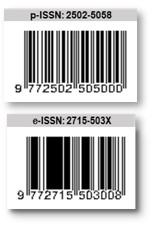
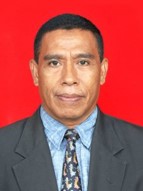
 Sinta ID:
Sinta ID: 








